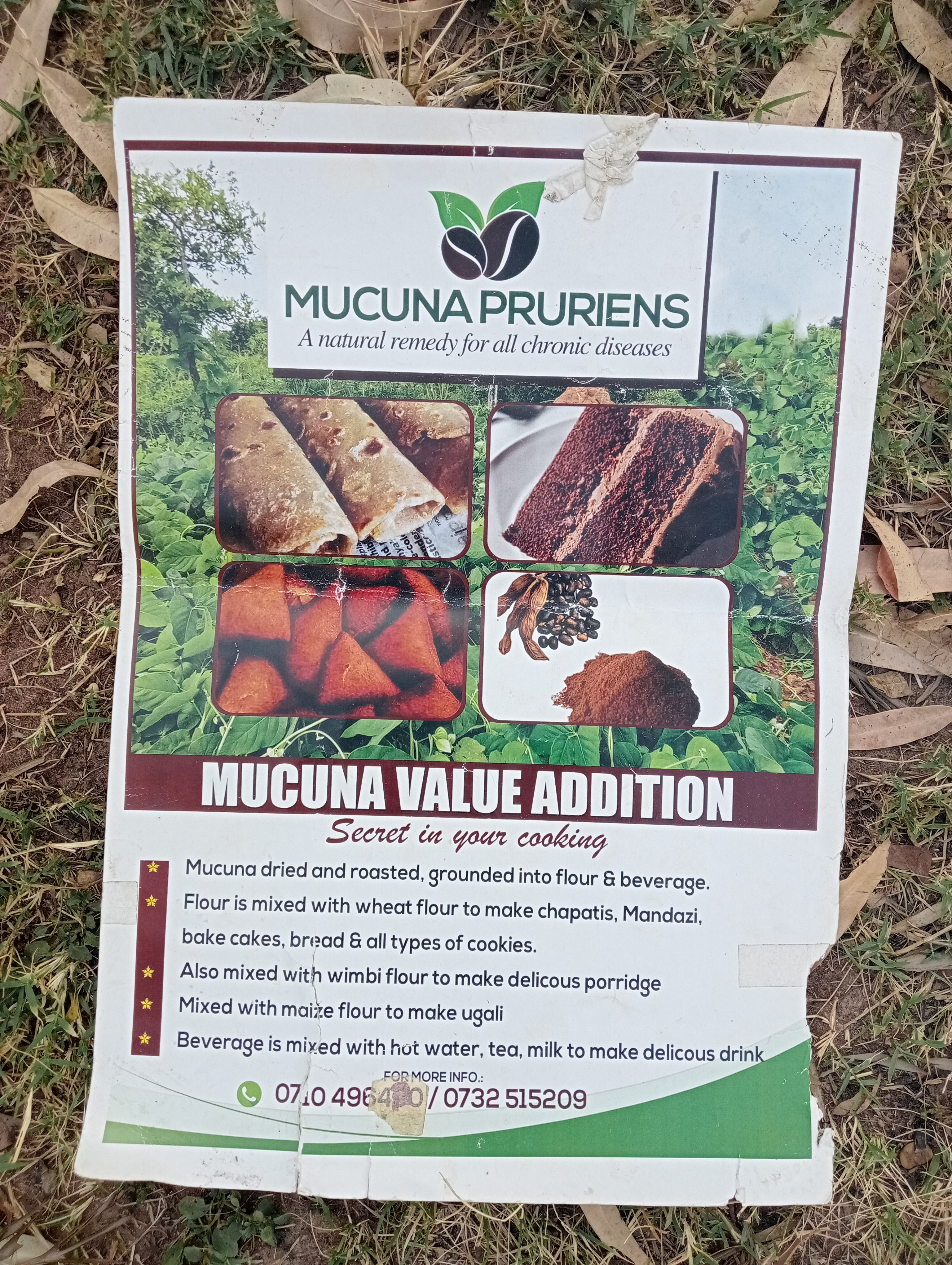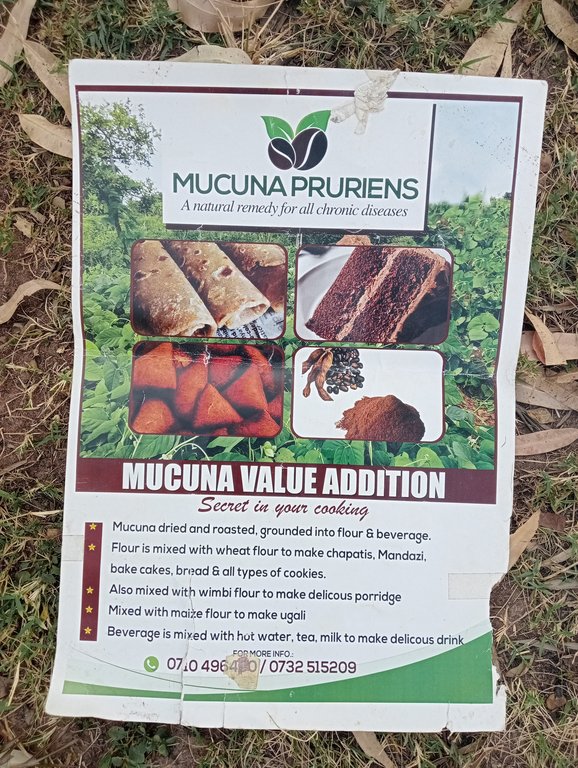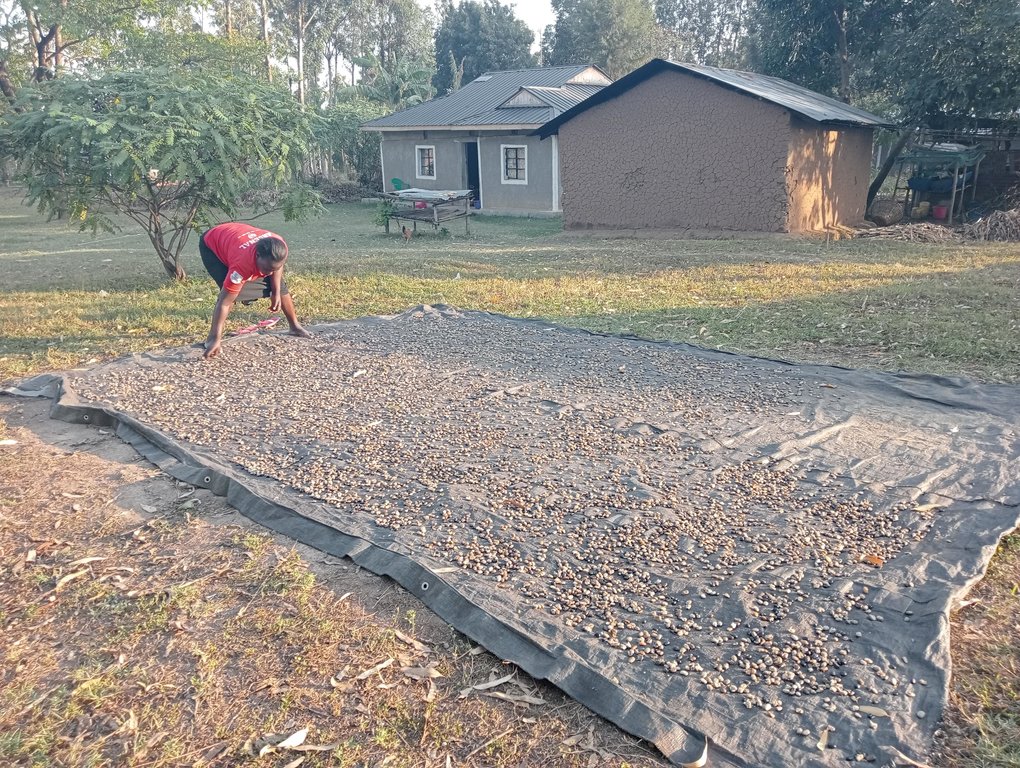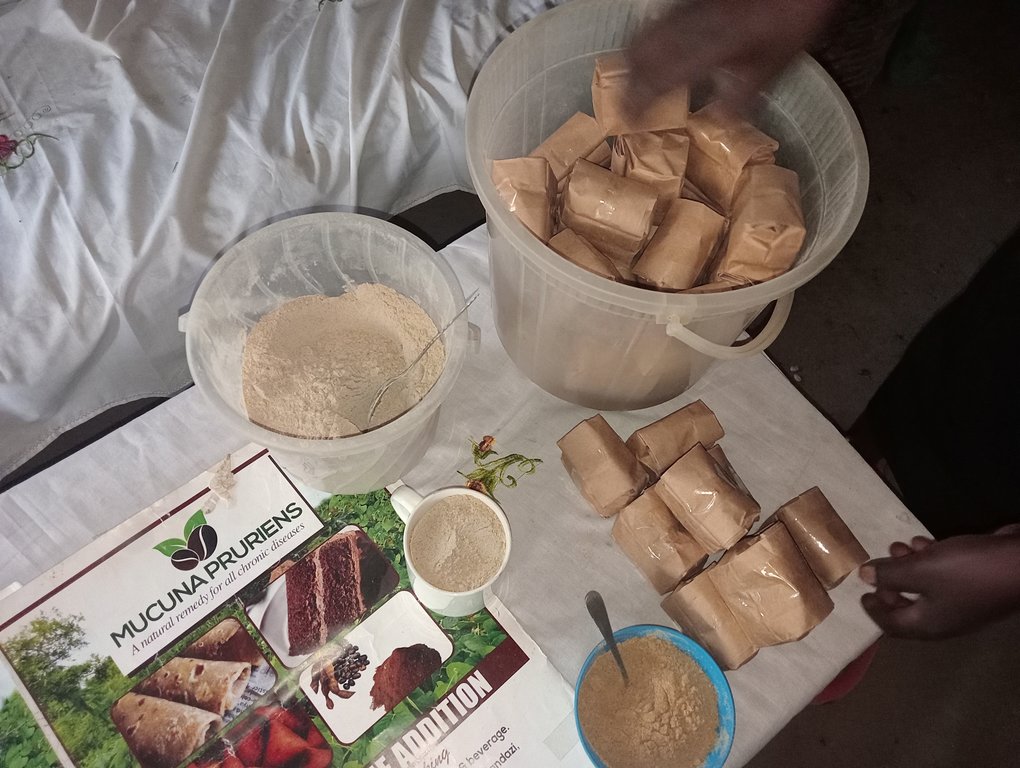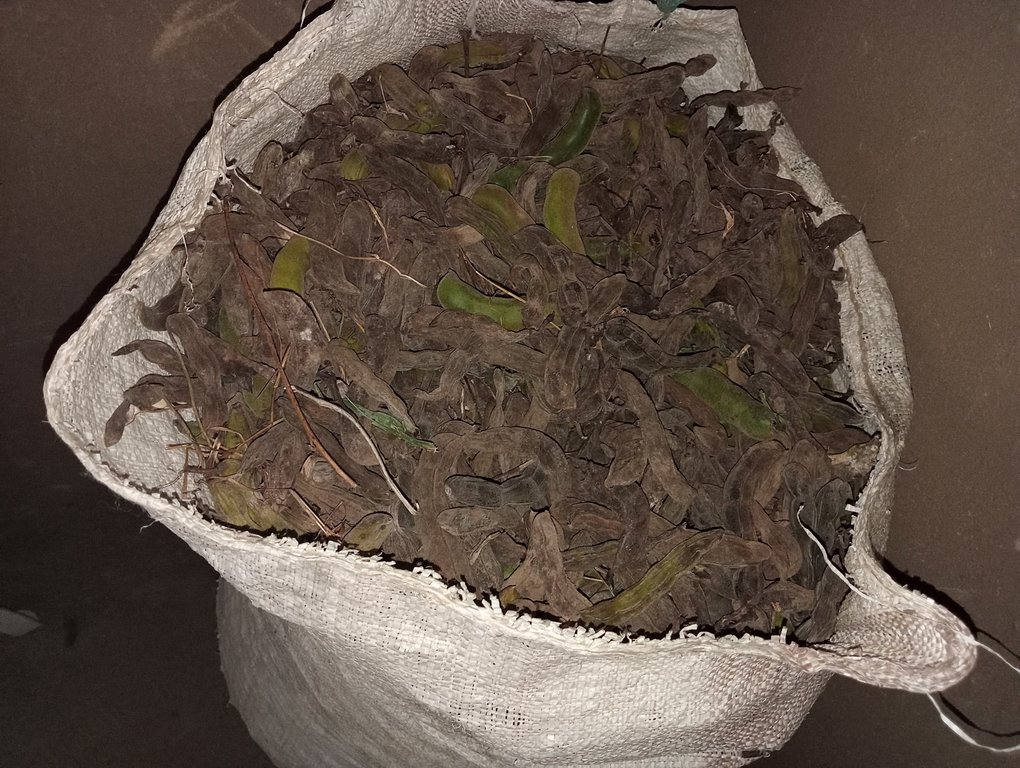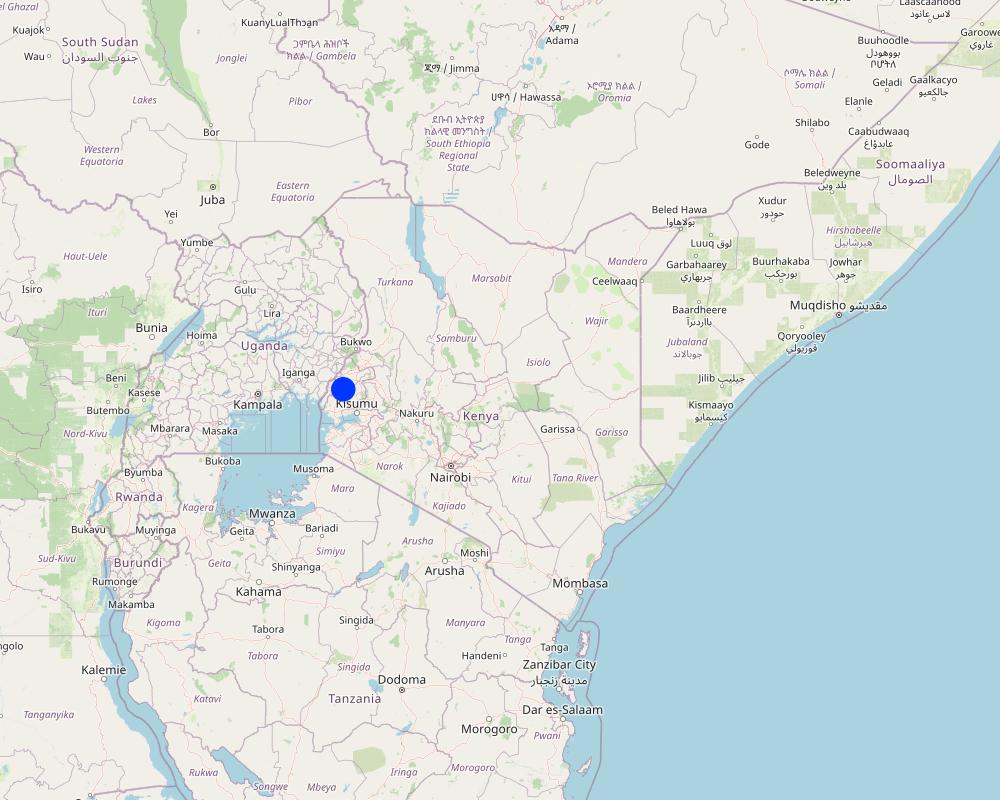Mucuna value-addition for female farmers [ເຄັນຢາ]
- ການສ້າງ:
- ປັບປູງ:
- ຜູ້ສັງລວມຂໍ້ມູນ: William Akwanyi
- ບັນນາທິການ: George Onyango, Innocent Faith, Noel Templer, Tabitha Nekesa, Ahmadou Gaye, Siagbé Golli
- ຜູ້ທົບທວນຄືນ: William Critchley, Rima Mekdaschi Studer, Sally Bunning
N/A
approaches_6684 - ເຄັນຢາ
ເບິ່ງພາກສ່ວນ
ຂະຫຍາຍທັງໝົດ ຍຸບທັງໝົດ1. ຂໍ້ມູນທົ່ວໄປ
1.2 ລາຍລະອຽດ ການຕິດຕໍ່ ຂອງບຸກຄົນທີ່ຊັບພະຍາກອນ ແລະ ສະຖາບັນ ການມີສ່ວນຮ່ວມ ໃນການປະເມີນຜົນ ແລະ ເອກະສານ ຂອງວິທີທາງ
ບຸກຄົນສຳຄັນ (ຫຼາຍຄົນ)
ຜູ້ນໍາໃຊ້ທີ່ດິນ:
Asievela Rebecca
+254 714 890016 / +254 731 265120
rebecca.asievela@gmail.com / N/A
Welthungerhilfe farmer
Rebecca Asievela's farm in Emachina Village, Koyonzo Ward, Matungu Sub-county, Kakamega County
ເຄັນຢາ
ຜູ້ຊ່ຽວຊານ ດ້ານການຄຸ້ມຄອງ ທີ່ດິນແບບຍືນຍົງ:
ຜູ້ຊ່ຽວຊານ ດ້ານການຄຸ້ມຄອງ ທີ່ດິນແບບຍືນຍົງ:
ຊື່ຂອງໂຄງການ ທີ່ອໍານວຍຄວາມສະດວກ ໃນການສ້າງເອກກະສານ ຫຼື ປະເມີນດ້ານແນວທາງ (ຖ້າກ່ຽວຂ້ອງ)
Soil protection and rehabilitation for food security (ProSo(i)l)ຊື່ຂອງ ສະຖາບັນການຈັດຕັ້ງ ທີ່ອໍານວຍຄວາມສະດວກ ໃນການສ້າງເອກກະສານ ຫຼື ປະເມີນແນວທາງ (ຖ້າກ່ຽວຂ້ອງ)
Deutsche Gesellschaft für Internationale Zusammenarbeit (GIZ)ຊື່ຂອງ ສະຖາບັນການຈັດຕັ້ງ ທີ່ອໍານວຍຄວາມສະດວກ ໃນການສ້າງເອກກະສານ ຫຼື ປະເມີນແນວທາງ (ຖ້າກ່ຽວຂ້ອງ)
Alliance Bioversity and International Center for Tropical Agriculture (Alliance Bioversity-CIAT) - ເຄັນຢາ1.3 ເງື່ອນໄຂ ຂອງການນໍາໃຊ້ເອກກະສານຂໍ້ມູນ ຂອງ WOCAT
ເມື່ອໃດທີ່ໄດ້ສັງລວມຂໍ້ມູນ (ຢູ່ພາກສະໜາມ)?
28/01/2023
ຜູ້ສັງລວມ ແລະ ບັນດາຜູ້ຕອບແບບສອບຖາມ ຍອມຮັບໃນເງື່ອນໄຂ ການນໍາໃຊ້ຂໍ້ມູນເອກະສານ ທີ່ສ້າງຂື້ນ ໂດຍຜ່ານ ອົງການ WOCAT:
ແມ່ນ
1.4 ເອກະສານອ້າງອີງ (ຫຼາຍ) ກັບແບບສອບຖາມ (ຫຼາຍ) ເຕັກໂນໂລຢີ ຂອງດ້ານການຄຸ້ມຄອງ ດິນແບບຍືນຍົງ
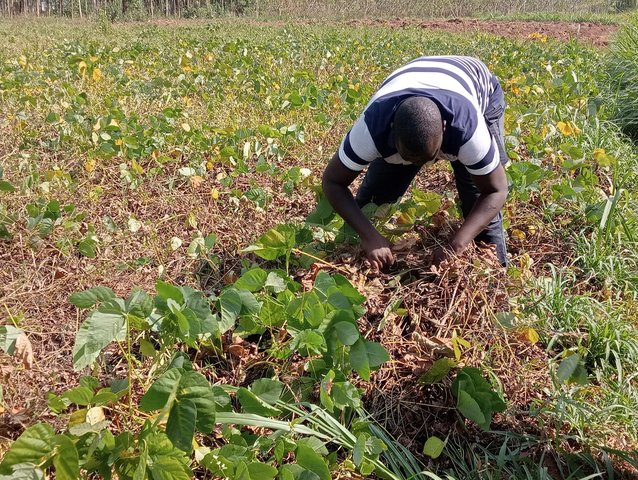
Permanent soil cover [ເຄັນຢາ]
Permanent soil cover with cover crops and/or crop residues helps to control soil erosion, suppress weeds and build up soil fertility. It can also add organic matter to the soil.
- ຜູ້ສັງລວມຂໍ້ມູນ: William Akwanyi
2. ພັນລະນາ ແນວທາງການຄຸ້ມຄອງນໍາໃຊ້ດິນແບບຍືນຍົງ
2.1 ການອະທິບາຍ ໂດຍຫຍໍ້ ຂອງວິທີທາງ
Promoting mucuna seed processing for food and nutrition security and income generation encourages women farmers to plant mucuna as a cover crop that improves soil productivity.
2.2 ການອະທິບາຍ ລາຍລະອຽດ ຂອງວິທີທາງ
ການອະທິບາຍ ລາຍລະອຽດ ຂອງວິທີທາງ:
Mucuna pruriens (velvet bean) is tropical legume that is widely known for its ability to rehabilitate soils by increasing organic matter. Unlike many other legumes of the bean family, mucuna seeds (beans) are not very palatable. In addition, raw and unprepared mucuna beans can cause severe digestive disorders. However, due to its emerging health and economic benefits, many farmers are now adopting the crop. Consequently, the crop is simultaneously helping in soil conservation by controlling soil erosion and improving soil structure alongside suppressing weeds.
Promoting the economic benefits of mucuna through value addition is a key factor in ensuring farmers adopt mucuna as a conservation agriculture crop. Mucuna value addition involves various stages of beans preparation/ treatment aimed at reducing the potential of L-DOPA toxicity. The ProSoil project promoted the uptake of mucuna as a green manure cover crop by training farmers on mucuna bean value-addition. In Matungu area of Kakamega County, Kenya, the ProSoil project partnered with a local farmer-based self-help group, Tunza Udongo Self Help Group [‘tunza udongo’ is a Kiswahili phrase for ‘take care of the soil’] which facilitated the convening women farmers. The project facilitated specialists in mucuna value addition from the Ministry of Agriculture who trained the farmers.
To spread this approach, the trained farmers train other farmers. In addition to the training in mucuna value-addition, the farmers were informed about the ecological and economic importance of mucuna and its propagation. The ProSoil project (GIZ and WHH) and Ministry of Agriculture invite the farmers to events such as farmer field days where they can exhibit different products from mucuna, network, and link up with potential markets. On the other hand, Tunza Udongo Self Help plays an important role in collective marketing.
One aim of promoting mucuna value addition is to increase its uptake by farmers as a green manure cover crop which is an important measure in conservation agriculture. Mucuna beans preparation is a domestic chore equivalent to other chores that are traditionally performed by women. Consequently, the entire farming household benefits from the income from the sale of mucuna products (skin free beans, flour, beverage, and baked products). The prices of these products vary in time and space depending on the availability of and demand for the products. However, the average prices are KES 100.00 per kg of skin free beans, KES 120.00 per kg of flour, and KES 150.00 per kg of beverage. Farmers also sell unprocessed mucuna beans as seed at KES 100.00 – 200.00 per kg depending on the availability of, and demand for, the seeds.
2.3 ຮູບພາບຂອງແນວທາງ
ຂໍ້ສັງເກດໂດຍທົ່ວໄປກ່ຽວກັບການຮູບພາບ:
Processing of mucuna beans only requires equipment that are available in most households.
2.4 ວີດີໂອ ຂອງວິທີທາງ
ຄວາມຄິດເຫັນ, ຄໍາອະທິບາຍຫຍໍ້:
https://vimeo.com/manage/videos/807802820/privacy
Winnowing boiled and sun-dried mucuna beans to remove skin.
ວັນທີ:
28/01/2023
ສະຖານທີ່:
Rebecca Asievela's farm in Emachina Village, Koyonzo Ward, Matungu Sub-county, Kakamega County
ຊື່ຂອງຜູ້ຖ່າຍວີດີໂອ:
William Akwanyi
2.5 ປະເທດ / ເຂດ / ສະຖານທີ່ບ່ອນທີ່ແນວທາງໄດ້ຖືກນໍາໃຊ້
ປະເທດ:
ເຄັນຢາ
ພາກພື້ນ / ລັດ / ແຂວງ:
Kakamega County in western Kenya
ຂໍ້ມູນເພີ່ມເຕີມຂອງສະຖານທີ່:
Emachina Village, Ejinja Sub-location, Koyonzo Location, Koyonzo Ward, Matungu Sub-county
ຄວາມຄິດເຫັນ:
GPS coordinates collected at the farm are 0.425487, 34.460523,
Map
×2.6 ວັນທີເລີ່ມຕົ້ນ ແລະ ສິ້ນສຸດ ການຈັດຕັ້ງປະຕີບັດ ວິທີທາງ
ສະແດງປີຂອງການເລີ່ມຕົ້ນ:
2019
ຄວາມຄິດເຫັນ:
The approach is still being applied as many farmers are continuing to add value to mucuna and selling the products.
2.7 ປະເພດຂອງແນວທາງ
- ພາຍໃຕ້ໂຄງການ / ແຜນງານ
2.8 ເປົ້າໝາຍ / ຈຸດປະສົງຫຼັກ ຂອງການຈັດຕັ້ງປະຕິບັດ ວິທີທາງ
To increase its farmers' uptake of mucuna as a green manure cover crop which is an important measure in conservation agriculture.
2.9 ເງື່ອນໄຂອໍານວຍ ຫຼື ຂັດຂວາງການປະຕິບັດຂອງເຕັກໂນໂລຢີ / ເຕັກໂນໂລຢີການນໍາໃຊ້ຕາມແນວທາງ
ສັງຄົມ / ວັດທະນະທໍາ / ມາດຕະຖານ ແລະ ຄຸນຄ່າທາງສາສະໜາ
- ອໍານວຍ
Perceived health benefits of mucuna and food and nutritional value.
ການຮ່ວມມື / ການປະສານງານຂອງຜູ້ກ່ຽວຂ້ອງ
- ອໍານວຍ
Market linkages by GIZ and Welthungerhilfe partners.
ການປົກຄອງທີ່ດິນ (ການຕັດສິນໃຈ, ການປະຕິບັດ ແລະ ຂໍ້ບັງຄັບ)
- ອໍານວຍ
Like many other crops of the bean family, mucuna is entirely managed by women.
ຄວາມຮູ້ກ່ຽວກັບການຄຸ້ມຄອງ ທີ່ດິນແບບຍືນຍົງ, ການເຂົ້າເຖິງການສະໜັບສະໜູນ ທາງດ້ານວິຊາການ
- ອໍານວຍ
Training by Welthungerhilfe specialists.
ຕະຫຼາດ (ໃນການຊື້ວັດຖຸດິບ, ຂາຍຜະລິດຕະພັນ) ແລະ ລາຄາ
- ອໍານວຍ
Availability of market as a result of increasing demand for mucuna products due to perceived health benefits of mucuna.
ວຽກ, ມີກໍາລັງຄົນ
- ອໍານວຍ
Processing requires equipment that are commonly available in most households.
- ເຊື່ອງຊ້ອນ
Processing of mucuna beans is labour intensive.
ອື່ນໆ
- ອໍານວຍ
Githeri is Kenyan traditional meal, especially in Central Kenya. Adding processed mucuna beans to githeri makes it appealing. This is a motivation for many farmers to adopt mucuna.
3. ການມີສ່ວນຮ່ວມ ແລະ ບົດບາດຂອງພາກສ່ວນທີ່ກ່ຽວຂ້ອງທີ່ໄດ້ມີສ່ວນຮ່ວມ
3.1 ຜູ້ມີສ່ວນຮ່ວມ ໃນວິທີທາງ ແລະ ພາລະບົດບາດ ຂອງເຂົາເຈົ້າ
- ຜູ້ນໍາໃຊ້ດິນໃນທ້ອງຖິ່ນ / ຊຸມຊົນທ້ອງຖິ່ນ
The farmers in the area who are mostly small-scale farmers due to the small parcels of land. Women farmers constituted 75%.
Mucuna value addition is a domestic chore equivalent to other women centric domestic chores that are traditionally performed by women. Hence, commonly done by women who are targeted by the value addition. However, the end result benefits the entire farming household.
- ອົງການຈັດຕັ້ງ ພາຍໃນຊຸມຊົນ
Tunza Udongo Self-Help Group
Convening farmers for training.
- ຜູ້ຊ່ຽວຊານ ການນຄຸ້ມຄອງ ທີ່ດິນແບບຍືນຍົງ / ທີ່ປຶກສາດ້ານກະສິກໍາ
GIZ ProSoil project SLM specialists and specialists from the implementing partner, Welthungerhilfe.
Provided technical advice to the farmers on how to process mucuna as a way of encouraging households to adopt mucuna as a green manure cover crop.
- ອໍານາດ ການປົກຄອງທ້ອງຖິ່ນ
Extension staff from the county department of agriculture
Training farmers
- ອົງການຈັດຕັ້ງ ສາກົນ
GIZ
Financial support to the technical team and farmers during capacity building.
ຖ້າຫາກມີຫຼາຍພາກສ່ວນທີ່ເຂົ້າຮ່ວມ ໃຫ້ລະບຸ ອົງການທີ່ເປັນຫຼັກ ໃນການຈັດຕັ້ງປະຕິບັດ:
GIZ
3.2 ການມີສ່ວນຮ່ວມຂອງຜູ້ນໍາໃຊ້ທີ່ດິນໃນທ້ອງຖິ່ນ / ຊຸມຊົນທ້ອງຖິ່ນໃນໄລຍະທີ່ແຕກຕ່າງກັນຂອງແນວທາງ
| ການລວບລວມ ເອົາຜູ້ນໍາໃຊ້ດິນ ໃນທ້ອງຖິ່ນ / ຊຸມຊົນທ້ອງຖິ່ນ | ໃຫ້ລະບຸ ຜູ້ໃດທີ່ມີສ່ວນຮ່ວມ ໃນແຕ່ລະກິດຈະກໍາ? | |
|---|---|---|
| ການເລີ່ມຕົ້ນ / ແຮງຈູງໃຈ | ການນໍາໃໍຊ້ເອງ | Farmers involved in the training on mucuna value addition. |
| ການວາງແຜນ | ການຮ່ວມມື | Farmers consulted on where and when to conduct trainings and demonstrate mucuna value-addition. |
| ການປະຕິບັດ | ການນໍາໃໍຊ້ເອງ | Each farmer processes his/ her own mucuna and decides on whether or not to sell the surplus products. Farmers look for their own markets. GIZ and Welthungerhilfe may link farmers to potential buyers. |
| ຕິດຕາມກວດກາ / ການປະເມີນຜົນ | ການບໍ່ປະຕິບັດ | Interviews with implementing farmers. |
| ບໍ່ມີ |
3.3 ແຜນວາດ (ຖ້າມີ)
ການອະທິບາຍ:
The ProSoil Project consists of GIZ and the implementing partners in this case Welthungerhilfe (WHH). The project provides financial support to farmers through their groups for convening farmers for the trainings. The farmers are trained by technical staff from the County Ministry of Agriculture and sometimes by specialists from the ProSoil project. The county technical staff (trainers) are paid by the project through either GIZ or WHH.
ຜູ້ຂຽນ:
William Akwanyi
3.4 ການຕັດສິນໃຈກ່ຽວກັບການຄັດເລືອກເຕັກໂນໂລຢີຂອງການຄຸ້ມຄອງທີ່ດິນແບບຍືນຍົງ / ເຕັກໂນໂລຢີ
ລະບຸ ຄົນທີ່ຕັດສິນໃຈ ກ່ຽວກັບການຄັດເລືອກຂອງ ເຕັກໂນໂລຢີ / ເຕັກໂນໂລຢີ ຈະໄດ້ຮັບການປະຕິບັດ:
- ຜູ້ນໍາໃຊ້ທີ່ດິນຫຼັກ, ການສະໜັບສະໜູນ ໂດຍຜູ້ຊ່ຽວຊານ ການນໍາໃຊ້ທີ່ດິນແບບຍືນຍົງ
ອະທິບາຍ:
Decisions on what products to produce from mucuna were made mainly by land users supported by SLM specialists.
Specify on what basis decisions were made:
- ປະເມີນເອກກະສານ ຄວາມຮູ້ກ່ຽວກັບ ການຄຸ້ມຄອງ ທີ່ດິນແບບຍືນຍົງ (ຫຼັກຖານທີ່ຊ່ວຍໃນການຕັດສິນໃຈ)
- ປະສົບການສ່ວນບຸກຄົນ ແລະ ຄວາມຄິດເຫັນ (ທີ່ບໍ່ເປັນເອກກະສານ)
4. ການສະໜັບສະໜູນທາງດ້ານວິຊາການ, ການສ້າງຄວາມສາມາດ, ແລະ ການຈັດການຄວາມຮູ້.
4.1 ການສ້າງຄວາມສາມາດ / ການຝຶກອົບຮົມ
ຜູ້ນໍາໃຊ້ທີ່ດິນ ຫຼື ພາກສ່ວນກ່ຽວຂ້ອງອື່ນໆ ໄດ້ຮັບການຝຶກອົບຮົມບໍ່?
ແມ່ນ
ໃຫ້ລະບຸ ຜູ້ໃດທີ່ໄດ້ຮັບການຝຶກອົບຮົມ:
- ຜູ້ນໍາໃຊ້ດິນ
- ພະນັກງານພາກສະໜາມ / ທີ່ປຶກສາ
- Agriculture extension officers from the county department of agriculture
ຖ້າເປັນໄປໄດ້, ໃຫ້ລະບຸເພດ, ອາຍຸ, ສະຖານະພາບ, ຊົນເຜົ່າ, ແລະ ອື່ນໆ:
Both men and women farmers, agriculture extension officers from the county department of agriculture, and project field staff (GIZ and WHH) were trained on mucuna value addition. The women constituted over 75% of the farmer trainees.
ຮູບແບບຂອງການຝຶກອົບຮົມ:
- ຕົວຕໍ່ຕົວ
- ເນື້ອທີ່ສວນທົດລອງ
- ຫຼັກສູດ
ໃນຫົວຂໍ້:
1. Agronomic practices for mucuna
2. Harvesting and post-harvest handling of mucuna beans
3. Processing of mucuna beans
4. Value addition to mucuna beans
5. Packaging of mucuna products
6. Marketing of mucuna products
ຄວາມຄິດເຫັນ:
Welthungerhilfe facilitated a consultant to train of agriculture extension officers from the county department of agriculture, especially agroeconomists. The trained officers later trained the farmers in groups. The trained farmers have been training other farmers through farmer-to-farmer peer learning approach.
4.2 ການບໍລິການໃຫ້ຄໍາປຶກສາ
ເຮັດຜູ້ໃຊ້ທີ່ດິນມີການເຂົ້າເຖິງການບໍລິການໃຫ້ຄໍາປຶກສາ?
ແມ່ນ
ລະບຸວ່າການສະໜອງ ການບໍລິການ ໃຫ້ຄໍາປຶກສາ:
- ໃນພື້ນທີ່ຂອງຜູ້ນໍາໃຊ້ດິນ
- Specific locations where the farmers interact with the technical officers
ອະທິບາຍ / ຄວາມຄິດເຫັນ:
Technical officers advise farmers at their homesteads whenever they visit them. Meetings are held on needs basis between farmers and the technical officers where pieces of advice are given to farmers.
4.3 ສະຖາບັນການສ້າງຄວາມເຂັ້ມແຂງ (ການພັດທະນາອົງການຈັດຕັ້ງ)
ສະຖາບັນ ໄດ້ຮັບການສ້າງຕັ້ງຂື້ນ ຫຼື ໄດ້ຮັບການສ້າງຄວາມເຂັ້ມແຂງ ໂດຍການຈັດຕັ້ງປະຕິບັດ ວິທີທາງບໍ່?
- ມີ, ໜ້ອຍໜຶ່ງ
ລະບຸ ທາງສະຖາບັນ ໄດ້ສ້າງຄວາມເຂັ້ມແຂງ ໃນລະດັບໃດ (ຫຼາຍ):
- ທ້ອງຖິ່ນ
ອະທິບາຍ ສະຖາບັນການຈັດຕັ້ງ, ພາລະບົດບາດ ແລະ ໜ້າທີ່ຮັບຜິດຊອບ, ສະມາຊິກ ແລະ ອື່ນໆ.
Farmer groups, groups promote farmer-to-farmer peer learning.
ລະບຸ ປະເພດ ຂອງສະໜັບສະໜູນ:
- ການສ້າງຄວາມອາດສາມາດ / ການຝຶກອົບຮົມ
ໃຫ້ລາຍລະອຽດເພີ່ມເຕີມ:
Knowledge on how to market their products.
4.4 ຕິດຕາມກວດກາ ແລະ ປະເມີນຜົນ
ການຈັດຕັ້ງປະຕິບັດ ວິທີທາງ ໄດ້ມີການປະເມີນຜົນ ແລະ ຕິດຕາມບໍ?
ແມ່ນ
ຄວາມຄິດເຫັນ:
The ProSoil project (GIZ and Welthungerhilfe) and the County Department of Agriculture regularly follows up with farmers to check on the implementation of technologies promoted under this approach through annual surveys involving key informant interviews (KII), focus group discussions (FGDs), and household surveys.
ຖ້າແມ່ນ, ເອກກະສານສະບັບນີ້ ແມ່ນໄດ້ນໍາໃຊ້ເຂົ້າໃນການຕິດຕາມ ແລະ ປະເມີນຜົນບໍ່?
ບໍ່ແມ່ນ
ຄວາມຄິດເຫັນ:
This documentation in intended for keeping a record of SLM technologies and approaches.
4.5 ການຄົ້ນຄວ້າ
ນີ້້ແມ່ນສ່ວນໜຶ່ງ ການຄົ້ນຄວ້າ ຂອງວິທີທາງບໍ່?
ບໍ່ແມ່ນ
5. ການສະໜັບສະໜູນທາງດ້ານການເງິນ ແລະ ອຸປະກອນຈາກພາຍນອກ
5.1 ງົບປະມານປະຈໍາປີ ສໍາລັບວິທີທາງ ຂອງການຄຸ້ມຄອງ ທີ່ດິນແບບຍືນຍົງ
ຖ້າຫາກບໍ່ຮູ້ຈັດງົບປະມານທີ່ແນ່ນອນ ແມ່ນໃຫ້ປະມານເອົາ:
- 10,000-100,000
ຄໍາເຫັນ (ຕົວຢ່າງ: ແຫຼ່ງຂໍ້ມູນຫຼັກ ຂອງການສະໜອງທຶນ / ຜູ້ໃຫ້ທຶນທີ່ສໍາຄັນ):
Costs met by GIZ ProSoil project and included facilitation of transport to farmers (25 farmers) and trainers and remuneration to trainers. Other costs include support to farmers to purchase mucuna seeds.
5.2 ການສະໜັບສະໜູນ ທາງດ້ານການເງິນ / ອຸປະກອນ ສະໜອງໃຫ້ແກ່ຜູ້ນໍາທີ່ດິນ
ຜູ້ນໍາໃຊ້ດິນ ໄດ້ຮັບການສະໜັບສະໜູນ ທາງດ້ານ ການເງິນ / ອຸປະກອນ ໃນການຈັດຕັ້ງປະຕິບັດ ເຕັກໂນໂລຢີບໍ?
ແມ່ນ
ຖ້າແມ່ນ, ໃຫ້ລະບຸປະເພດ (ຫຼາຍ) ຂອງການສະໜັບສະໜູນ, ເງື່ອນໄຂ ແລະ ຜູູ້ສະໜອງ (ຫຼາຍ):
Welthungerhilfe supported the farmers (through their group) with mucuna seeds.
5.3 ເງິນສົມທົບສໍາລັບການນໍາໃຊ້ສະເພາະປັດໃຈຂາເຂົ້າໃນການຜະລີດກະສິກໍາ (ລວມທັງແຮງງານ)
ຖ້າແຮງງານ ຂອງຜູ້ນໍາໃຊ້ດິນ ໄດ້ຮັບການສະໜັບສະໜູນ ປັດໃຈຂາເຂົ້າ, ແມ່ນບໍ່:
- ການອາສາ
ຄວາມຄິດເຫັນ:
Farmers voluntarily provided labour at the demonstration plot.
5.4 ສິນເຊື່ອ
ໄດ້ປ່ອຍສິນເຊື່ອ ສະໜອງໃຫ້ພາຍໃຕ້ ວິທີການສໍາລັບກິດຈະກໍາ ການຄຸ້ມຄອງ ທີ່ດິນແບບຍືນນຍົງບໍ່?
ບໍ່ແມ່ນ
5.5 ສິ່ງຈູງໃຈ ຫຼື ເຄື່ອງມືອື່ນໆ
ການສົ່ງເສີມ ຈັດຕັ້ງປະຕິບັດ ເຕັກໂນໂລຢີ ໃນການຄຸ້ມຄອງ ດິນແບບຍືນຍົງ ໄດ້ສະໜອງສິ່ງກະຕຸກຊຸກຍູ້ບໍ່?
ບໍ່ແມ່ນ
6. ວິເຄາະຜົນກະທົບ ແລະ ສັງລວມບັນຫາ
6.1 ຜົນກະທົບຂອງແນວທາງ
ການນໍາໃຊ້ ວິທີທາງ ດັ່ງກ່າວນີ້ ສາມາດເປັນຫຼັກຖານ ທີ່ສະໜັບສະໜູນ ໃຫ້ການຕັດສິນໃຈໄດ້ບໍ່?
- ບໍ່
- ມີ, ໜ້ອຍໜຶ່ງ
- ມີ, ພໍສົມຄວນ
- ມີ, ຫຼາຍ
As a result of the economic value of mucuna i.e., sale of mucuna products for income, farmers made the decision to plant mucuna on their farms.
ການຈັດຕັ້ງປະຕິບັດ ວິທີທາງ ສາມາດຊ່ວຍຜູ້ນໍາໃຊ້ທີ່ດິນ ໃນການຈັດຕັ້ງປະຕິບັດ ແລະ ບໍາລຸງຮັກສາ ເຕັກໂນໂລຢີ ການຄຸ້ມຄອງ ທີ່ດິນແບບຍືນຍົງໄດ້ບໍ?
- ບໍ່
- ມີ, ໜ້ອຍໜຶ່ງ
- ມີ, ພໍສົມຄວນ
- ມີ, ຫຼາຍ
Income generated from sell of value-added mucuna product motivated farmers to plant mucuna which is a green manure permanent soil cover crop.
ການນໍາໃຊ້ ວິທີທາງ ສາມາດປັບປຸງຄວາມຮູ້ ແລະ ຄວາມສາມາດຂອງຜູ້ນໍາໃຊ້ທີ່ດິນ ໃນການປະຕິບັດ ການຄຸ້ມຄອງ ທີ່ດິນແບບຍືດຍົງໄດ້ບໍ່?
- ບໍ່
- ມີ, ໜ້ອຍໜຶ່ງ
- ມີ, ພໍສົມຄວນ
- ມີ, ຫຼາຍ
Farmers were trained on agronomic practices for mucuna, hence improving their knowledge of using mucuna as a cover crop in conservation agriculture.
ການຈັດຕັ້ງປະຕິບັດ ວິທີທາງ ສາມາດສ້າງຄວາມເຂັ້ມແຂງ ທາງສັງຄົມ ແລະ ເສດຖະກິດບໍ່?
- ບໍ່
- ມີ, ໜ້ອຍໜຶ່ງ
- ມີ, ພໍສົມຄວນ
- ມີ, ຫຼາຍ
Women often have very little control over land-use, but they are able to plant mucuna even on very small pieces of land for and sell its products for income.
ການຈັດຕັ້ງປະຕິບັດ ວິທີທາງ ສາມາດປັບປຸງ ຄວາມສະເໜີພາບ ຂອງບົດບາດ ຍິງຊາຍ ແລະ ສ້າງຄວາມເຂັ້ມແຂງໃຫ້ຜູ້ຍິງໄດ້ບໍ່?
- ບໍ່
- ມີ, ໜ້ອຍໜຶ່ງ
- ມີ, ພໍສົມຄວນ
- ມີ, ຫຼາຍ
Women were able to plant mucuna even on very small pieces of land for and sell its products for income.
ການຈັດຕັ້ງປະຕິບັດ ວິທີທາງ ສາມາດຊຸກຍູ້ ຜູ້ນໍາໃຊ້ທີ່ດິນທີ່ເປັນຊາວໜຸ່ມ / ຄົນລຸ້ນໃໝ່ ໃນການຄຸ້ມຄອງ ທີ່ດິນແບບຍືນຍົງໄດ້ບໍ?
- ບໍ່
- ມີ, ໜ້ອຍໜຶ່ງ
- ມີ, ພໍສົມຄວນ
- ມີ, ຫຼາຍ
Income generated from sell of mucuna products is amotivation for young people to plant mucuna.
ການນໍາໃຊ້ ວິທີທາງ ໄດ້ປັບປຸງ ການຄໍ້າປະກັນສະບຽງອາຫານ ຫຼື ປັບປຸງໂຄສະນາການໄດ້ບໍ່?
- ບໍ່
- ມີ, ໜ້ອຍໜຶ່ງ
- ມີ, ພໍສົມຄວນ
- ມີ, ຫຼາຍ
Mucuna beans can be processed into various food products - flour for baking bread, edible beans, and beverage. The farmer reported that she has experienced positive well-being since she started eating mucuna products. She stated that mucuna can be used to treat various diseases, including ulcers, arthritis, and blood pressure problems.
ການຈັດຕັ້ງປະຕິບັດ ວິທີທາງ ສາມາດສ້າງຄວາມອາດສາມາດໃຫ້ຜູ້ນໍາໃຊ້ດິນ ໃນການປັບຕົວ ຕໍ່ການປ່ຽນແປງດິນຟ້າອາກາດ / ຫຼດຜ່ອນຄວາມສ່ຽງທາງໄພພິບັດໄດ້ບໍ? :
- ບໍ່
- ມີ, ໜ້ອຍໜຶ່ງ
- ມີ, ພໍສົມຄວນ
- ມີ, ຫຼາຍ
Farmers plant mucuna as a cover crop to prevent water lost from their soils.
6.2 ແຮງຈູງໃຈຫຼັກຂອງຜູ້ນໍາໃຊ້ທີ່ດິນໃນການປະຕິບັດການຄຸ້ມຄອງທີ່ດິນແບບຍືນຍົງ
- ການຜະລິດເພີ່ມຂຶ້ນ
Mucuna increases nitrogen and organic matter in the soil, hence improved crop production.
- ກໍາໄລເພີ່ມຂຶ້ນ (ຄວາມສາມາດ), ການປັບປຸງຄ່າໃຊ້ຈ່າຍ, ຜົນປະໂຫຍດ, ອັດຕາສ່ວນ
Mucuna is integrated with other crops, especially maize hence increasing the profit of the land. The income generated from sell of mucuna products increases farm profitability.
- ຫຼຸດຜ່ອນດິນເຊື່ອມໂຊມ
Mucuna as a cover crop reduces soil erosion.
- ການປັບປຸງ ຄວາມຮູ້ ແລະ ຄວາມສາມາດ ຂອງການຄຸ້ມຄອງ ທີ່ດິນແບບຍືນຍົງ
Farmers have enhanced their knowledge of mucuna value addition. They also train other farmers.
6.3 ຄວາມຍືນຍົງຂອງກິດຈະກໍາວິທີທາງ
ຜູ້ນໍາໃຊ້ ທີ່ດິນ ສາມາດສືບຕໍ່ ການຈັດຕັ້ງປະຕິບັດ ຜ່ານວິທີທາງໄດ້ບໍ່ (ໂດຍປາດສະຈາກ ການຊ່ວຍເຫຼືອ ຈາກພາກສ່ວນພາຍນອກ)?
- ແມ່ນ
ຖ້າ ໄດ້, ອະທິບາຍເຫດຜົນ:
Farmers produce their own mucuna seed and use the surplus beans as food or process them into different products. Mucuna is a perennial crop and farmers are able to retain it in the farm for more than one season. The farmers are also motivated to continue planting mucuna and producing different products for sell.
6.4 ຈຸດແຂງ / ຂໍ້ດີ ຂອງວິທີທາງ
| ຈຸດແຂງ / ຂໍ້ດີ / ໂອກາດໃນການນໍາໃຊ້ທີ່ດິນ |
|---|
| It is an income generating activity. |
| Keeps people busy at home while at the same time generating income. |
| Mucuna has several health benefits. |
| ຈຸດແຂງ / ຈຸດດີ / ໂອກາດ ຈາກທັດສະນະຂອງຜູ້ປ້ອນຂໍ້ມູນ ຫຼື ບຸກຄົນສຳຄັນ |
|---|
| Improves livelihoods of the land users. |
| Yields are often high. Hence, the beans for value addition are available. |
| Growing market due to increasing awareness about the value of the crop. |
6.5 ຈຸດອ່ອນ / ຂໍ້ເສຍຂອງແນວທາງ ແລະ ວິທີການແກ້ໄຂໃຫ້ເຂົາເຈົ້າ
| ຈຸດອ່ອນ / ຂໍ້ເສຍ / ຄວາມສ່ຽງໃນມູມມອງຂອງຜູ້ນໍາໃຊ້ທີ່ດິນ | ມີວິທີການແກ້ໄຂຄືແນວໃດ? |
|---|---|
| Labour intensive | Commitment and proper planning of farm work. |
| A lot of fuel required to boil the beans. | Farmers to incorporate agroforestry trees at their farms as a source of firewood. |
| ຈຸດອ່ອນ ຫຼື ຂໍ້ເສຍ ຫຼື ຄວາມສ່ຽງ ໃນມຸມມອງຂອງ ຜູ້ສັງລວມຂໍ້ມູນ ຫຼື ບັນດາຜູ້ຕອບແບບສອບຖາມ | ມີວິທີການແກ້ໄຂຄືແນວໃດ? |
|---|---|
| Consumption rate is low due to its low palatability. At the same time, it is consumed in small quantities. | Expand the market through market research. |
| Fear of L-DOPA poisoning. | Increase awareness about processing mucuna before consumption. |
7. ເອກກະສານອ້າງອີງ ແລະ ຂໍ້ມູນການເຊື່ອມໂຍງ
7.1 ວິທີການ / ແຫຼ່ງຂໍ້ມູນ
- ການໄປຢ້ຽມຢາມພາກສະໜາມ, ການສໍາຫຼວດພາກສະໜາມ
One field visit to the land user.
- ການສໍາພາດ ຜູ້ນໍາໃຊ້ທີ່ດິນ
One on-farm interview and follow-up calls with the land user.
- ສໍາພາດ ຊ່ຽວຊານ ການຄຸ້ມຄອງ ດິນແບບຍືນຍົງ
Interview with Welthungerhilfe SLM specialist and several follow-up calls.
- ການລວບລວມ ບົດລາຍງານ ແລະ ເອກະສານອື່ນໆ ທີ່ມີຢູ່ແລ້ວ
Online literature sources reviewed.
7.2 ເອກະສານທົ່ວໄປທີ່ສາມາດໃຊ້ໄດ້
ຫົວຂໍ້, ຜູ້ຂຽນ, ປີ, ISBN:
Promoting Mucuna Beans Production for Soil Rehabilitation, Incomes, Food and Nutrition Security in Kenya, by Mary Stella Wabwoba and Kenneth Mutoro, 2019, ISSN: 2644-2981
ມີຢູ່ໃສ?ມູນຄ່າເທົ່າໃດ?
Free download at https://irispublishers.com/gjnfs/fulltext/promoting-mucuna-beans-production-for-soil-rehabilitation-incomes-food-and-nutrition-security.ID.000543.php
7.3 ການເຊື່ອມຕໍ່ກັບຂໍ້ມູນທີ່ກ່ຽວຂ້ອງທີ່ສາມາດໃຊ້ອອນໄລນ໌
ຫົວຂໍ້ / ພັນລະນາ:
Processing of Mucuna for Human Food in the Republic of Guinea
URL:
https://www.redalyc.org/pdf/939/93911288020.pdf
ຂໍ້ມູນການເຊື່ອມຕໍ່ ແລະ ເນື້ອໃນ
ຂະຫຍາຍທັງໝົດ ຍຸບທັງໝົດການເຊື່ອມຕໍ່

Permanent soil cover [ເຄັນຢາ]
Permanent soil cover with cover crops and/or crop residues helps to control soil erosion, suppress weeds and build up soil fertility. It can also add organic matter to the soil.
- ຜູ້ສັງລວມຂໍ້ມູນ: William Akwanyi
ເນື້ອໃນ
ບໍ່ມີເນື້ອໃນ


